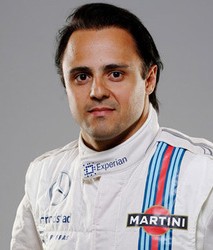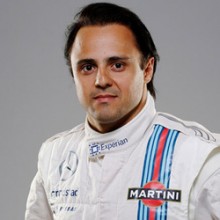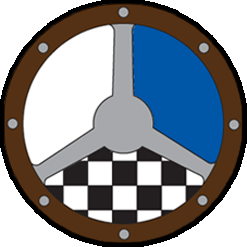Ask a pro
Receive advice directly from today’s top stars


Felipe Massa
Driver for the Williams F1 Team and winner of 11 Grands Prix
Felipe Massa, Williams F1 Driver and winner of 11 Grands Prix, is the latest online driving instructor for SAFEisFAST.com.
Over the course of a Formula One career that has spanned two decades, the Brazilian has started more than 220 races, amassed 1,059 points and stood on the podium 41 times. He has driven for Sauber, Ferrari and Williams and currently sits in 6th position in the Drivers’ Championship standings.
Felipe Massa answers your questions!
-
Pedro Cruz
On a hot lap is it better to change the brake adjustment for each sector or keep a specific setup for all of it?




So, Pedro, it depends on the track. Sometimes you go to the circuit and you have one specific corner that you really need to change your brake balance for because maybe you are at risk of locking up your front wheels in this corner. Or maybe there is a part of the track that is very high speed where you need to have less rear brake balance so you change it, but there are tracks where you don’t need to change anything because the brakes are pretty much OK in every sector. It depends on the track to be honest.
SAFEisFAST.com video: Braking
-
Luis González Cos
What are your expectations for the 2016 F1 season?




Well I think it is a new championship, everyone starts from zero. But honestly my expectations for 2016 are not so different from entering 2015 because the rules are the same. We understand that to be able to fight with Mercedes we need to do a triple improvement not just one single improvement because every team will have got better, so we need a triple improvement to fight Mercedes. But it is another year where the rules are similar so I don’t think it will be a completely different thing.
-
Larry Kessler
We often hear F1 engineers telling their drivers during a race to conserve their tires. How do you continue to hold your position during the race and protect them?




Every race you need to protect the tires, even if it is a race where the degradation is low because if you are pushing too hard you will destroy your tires quicker than the other teams and lose performance. Young drivers tend to be very quick in qualifying or over one lap, but when they are in the race they do not look after their tires, save their fuel or drive in a generally efficient way. This is a skill that is very necessary to learn in F1.
SAFEisFAST.com video: Maximising Your Tyres
-
Anthony Sansone
I am a 17-year old kart driver and I want to progress to cars. What advice can you give me to be successful at the next level?




First of all you must work really hard with your team. You have so many things in a car that you don’t have in a kart, like telemetry, so it is things like this you need to work closely on with your engineers and mechanics so you can fully understand them. It is a process of learning and by understanding things quickly is how you get more performance. Also, you need to be very disciplined in everything if you want to be successful.
SAFEisFAST.com video: Karts to Cars
-
Bob Koveleski
When you are in the car where do you focus your eyes? For instance, when do you begin to look into the corner and what are you looking at? At the end of the straights, I notice some drivers turn their heads before others – is there some magic to this?




Well I think again it depends on the track. You look for different things. In every corner at every track you are always trying to find your reference, so sometimes maybe a tree is a reference, sometimes the 50m board or even the curb, so you create your own reference point. Sometimes your references change because it is raining or you are overtaking, but they can change very quickly. You create your own references that help you achieve your best possible performance.
-
Michael Martin
Other than being quick, what are some important traits an F1 driver must possess?




You need to understand your car. Many people are quick but they not consistent, they do not know how to use a car in the proper way. In the race you need to fully understand your car because if you do you will know when and how to be quick and how to use the car in the right way. For example, sometimes you are in traffic and you don’t need to push because you are waiting for an opportunity to overtake, or maybe the guy will take a pit stop and you need to have some performance left in your tires to go quick and overtake. This is when experience really helps.
SAFEisFAST.com video: What it Takes to Become a Champion
-
Clif Palmberg
How did you regain the confidence to get back in the seat after your life-threatening shunt in Hungary in 2009?




Well after my accident I had a little bit of time to stay home and think about coming back to racing. But to be honest I had a little bit of difficulty because I was having a difficult time with Ferrari when I came back with a new teammate. But I would say that I got my confidence back 100% when I moved away from Ferrari.
-
Sam
How has the motorsport ladder changed since you started racing? Is there a path to the top for those of us without significant wealth?




I think it has changed a lot, but the mentality, the way of sitting in the car, of trying to be quick and trying to learn and to understand setup, has not changed. I think the mentality seems the same from karts to the Formula cars. But the way things work in different categories is something that you need to understand. It is something that you need to be able to use your ability to learn as quick as you can when you are moving from different cars and I think your learning curve is the most important thing. When you get to Europe the best way to be able to grow and to possibly get to Formula One is by showing you’re ready in your results and the quicker you learn things like new tracks and different cars is how you get better results.
SAFEisFAST.com video: The Ladder System
 Road Racing Drivers Club
Road Racing Drivers Club
 Share
Share







